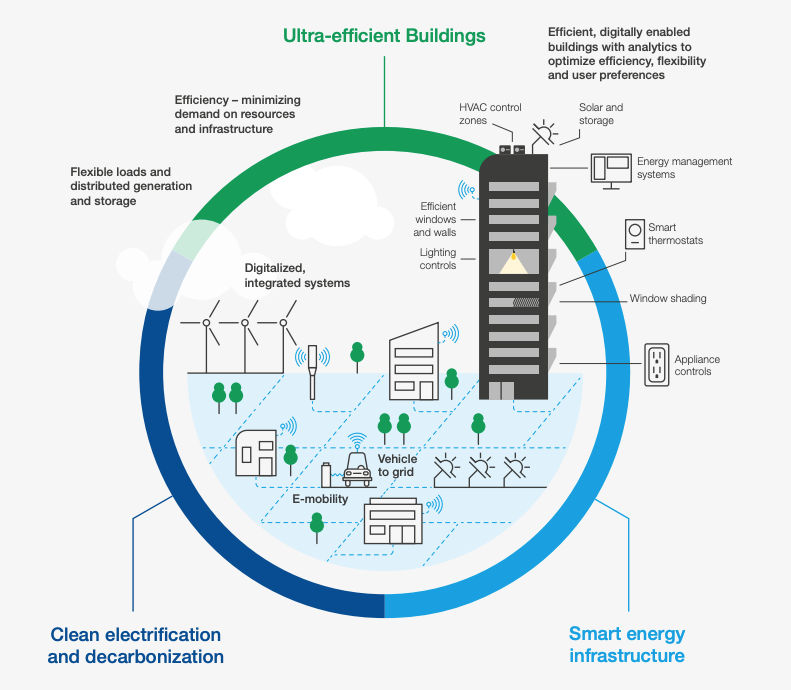The world’s biggest carbon-sucking machine is switching on in Iceland

Climeworks, a Swiss startup, builds machines that draw CO2 from the atmosphere. Their biggest facility to date will open in Iceland on Sept. 8.
Image: Climeworks
Stay up to date:
Climate Indicators
- Carbon capture could become essential in a bid to reduce the effects of climate change.
- The largest DAC plant in the world opened on Sept. 8 in Iceland, operated by the Swiss engineering startup Climeworks.
- The plant, known as Orca, will annually draw down a volume of emissions equivalent to about 870 cars.
We have to start removing carbon dioxide from the atmosphere to have any chance of averting the worst impacts of global warming, the Intergovernmental Panel on Climate Change said last month.
The fossil fuel economy must be run in reverse, effectively. The simplest and lowest-cost way to do that—planting trees—requires a lot of land relative to the scale of intervention that’s needed. So a handful of companies have been tinkering with “direct air capture” (DAC)—essentially, big CO2-sucking machines.
The largest DAC plant in the world will open Sept. 8 in Iceland. Operated by the Swiss engineering startup Climeworks, the plant, known as Orca, will annually draw down a volume of emissions equivalent to about 870 cars. Orca will boost total global DAC capacity by about 50%, adding to the dozen or so smaller plants that are already operational in Europe, Canada, and the US.
The plant is composed of eight boxes about the size of shipping containers, each fitted with a dozen fans that pull in air. CO2 is filtered out, mixed with water, and pumped into deep underground wells, where over the course of a few years it turns to stone, effectively removing it from circulation in the atmosphere.
Direct carbon removal is still much too expensive
The Orca launch follows on the heels of a $10 million contract Climeworks inked last week with reinsurance giant Swiss Re. The insurance company was essentially buying an undisclosed volume of carbon offset credits to count against its own carbon footprint. Climeworks hasn’t publicly disclosed its price per ton, but a Swiss Re press release described it as “several hundred dollars.”
This business model—the sale of offsets—is how Climeworks is approaching a key problem for the nascent DAC industry: How to make money. The alternative is to sell the captured CO2 to manufacturers who can use it as a raw material for cement and other products, or to oil companies that, ironically, use it to help dredge up more oil. But those customers are more accustomed to prices around $100 per ton.
Since the carbon offset market, as a whole, is riddled with cheap, dubious offsets, some emitters might be willing to pay top dollar, like Swiss Re (and Coca Cola and Microsoft, also major Climeworks clients), for a rock-solid offset. That capital, in turn, will help DAC scale and bring the cost down; experts predict it could reach $150 per ton in the next 5-10 years.
What is the Forum doing to help cities to reach a net-zero carbon future?
Orca will likely soon be dwarfed by competing projects in the US and Scotland that are expected to come online in the next two years. But even then, without much more public and private investment, the industry will be far from the 10 million tons per year that the International Energy Agency says are needed by 2030.
Accept our marketing cookies to access this content.
These cookies are currently disabled in your browser.
Don't miss any update on this topic
Create a free account and access your personalized content collection with our latest publications and analyses.
License and Republishing
World Economic Forum articles may be republished in accordance with the Creative Commons Attribution-NonCommercial-NoDerivatives 4.0 International Public License, and in accordance with our Terms of Use.
The views expressed in this article are those of the author alone and not the World Economic Forum.
Forum Stories newsletter
Bringing you weekly curated insights and analysis on the global issues that matter.
More on Climate ActionSee all
Gill Einhorn
April 15, 2025
Hubert Keller and Maximilian Martin
April 15, 2025
Makaio Witte and Sourajit Aiyer
April 14, 2025
Katia Moskvitch
April 14, 2025
Michelle You
April 10, 2025






